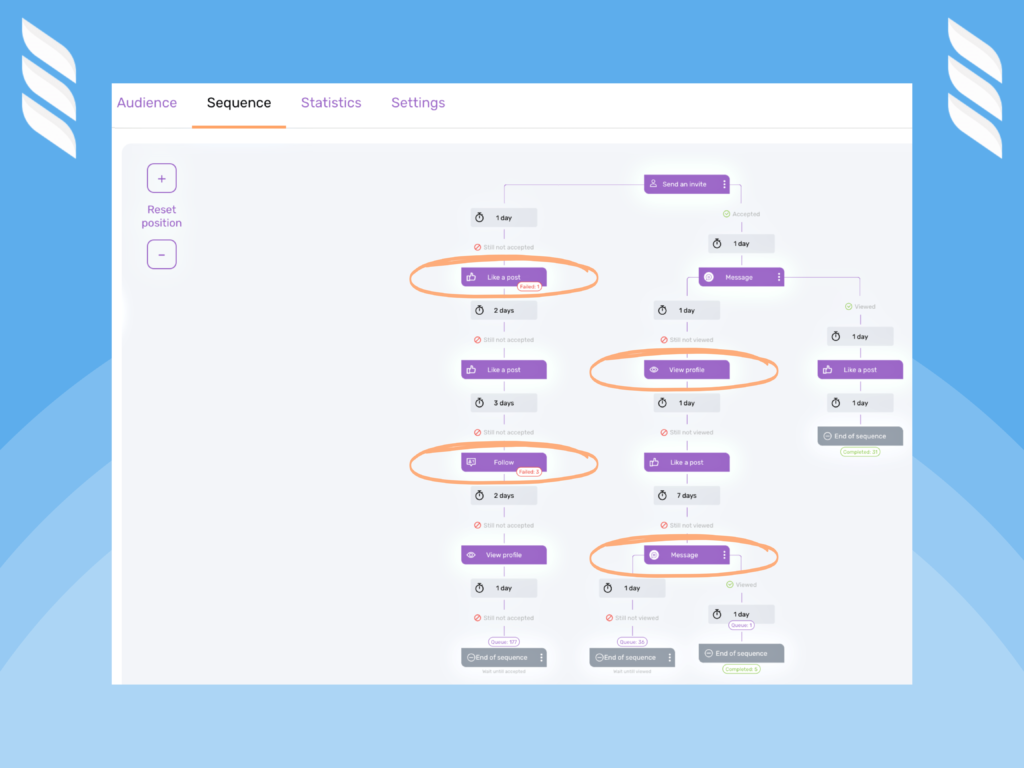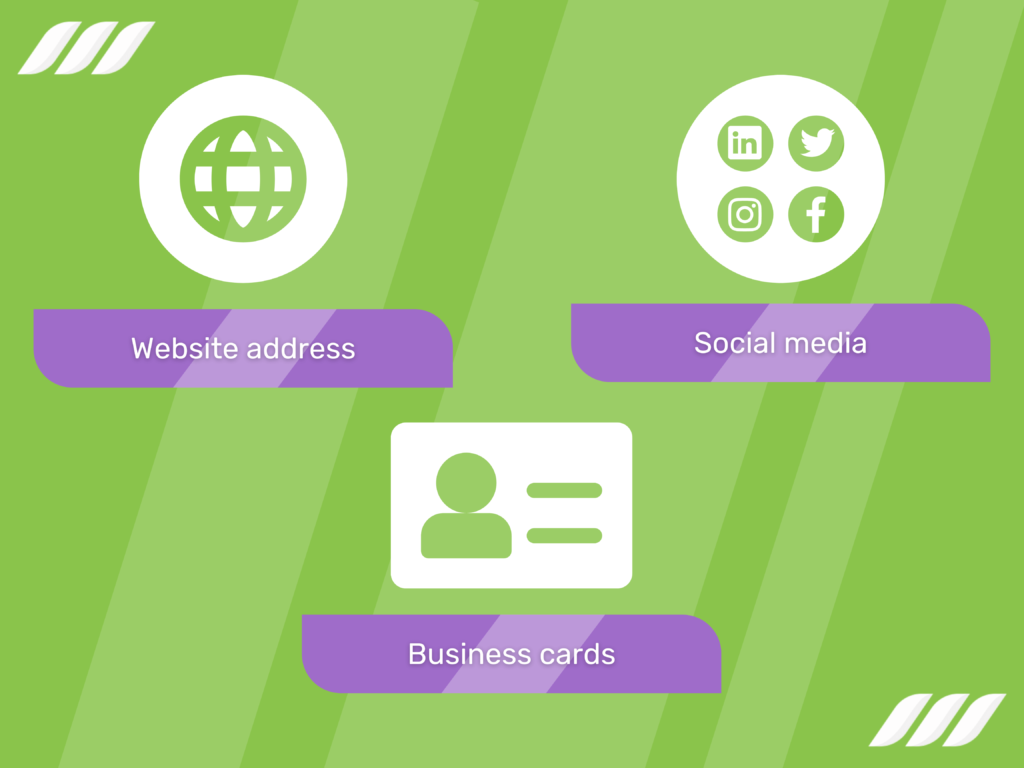|
Getting your Trinity Audio player ready...
|
Many small business owners struggle with growing sales and profits. Even if you’ve tried every trick in the book, sometimes it may feel like your business can’t seem to make a sale. You’re not alone – most businesses face this situation at some point.
But having a small business doesn’t mean you can’t scale it or sell more of your products or services. In fact, small businesses are so dynamic and innovative that they have more room for growth. This means if you need to increase sales for a small business, there are plenty of opportunities to go about it!
Our guide to increasing sales for small businesses has important tips and tricks to help you thrive in today’s competitive market. So instead of worrying about your sales targets, follow along, and let’s set a roadmap for your success!
Related article: Why You Need Dripify for Small Businesses

Why is Increasing Sales Important?
Without a constant flow of revenue, a company will quickly run out of money and be forced to close its doors. As such, it is essential to always think about ways to increase sales, which can involve anything from developing new marketing strategies to expanding your footprint.
Sure, shooting for the stars and setting big goals can be daunting. But remember, even if you don’t reach your goals immediately, you’ll still be better off than if you had set smaller, achievable goals. A small name in the market shouldn’t be afraid to aim big – remember, big dreams lead to big rewards.
Increasing sales also requires a commitment to offering high-quality products and services that meet customers’ needs. You can set yourself apart from the competition by constantly striving to improve your customer experience and attract more buyers.


12 Ways to Increase Sales in Any Business
Whether you are just starting or have been in business for years, these tips will help you get more customers and make more sales. From using social media to offering discounts, here are 12 ways to increase sales for small businesses.
1. Create Value Bundles
Value bundles and deals are a smart strategy to increase sales for small business. By creating a bundle of products or services that are related or complementary, you can offer customers a great deal while driving up sales.


For example, if you own a salon, you could create a value bundle that includes a haircut, color service, and manicure. And when you offer this bundle at a discount, you’ll draw new customers and generate more sales.
Using deals to clear old inventory or promote new products is also a good idea. For instance, offering a buy-one-get-one-free deal on a new product line is a savvy step to reduce overhead costs and get extra revenue.
The best part? Attractive deals help build customer loyalty! A customer expects good value while doing business with you, and if you deliver it, you’re well on your way to becoming a successful brand.
2. Get Involved In Your Local Community
There are several ways to increase your sales through community networking. One of the effective methods is to join your local or regional Chamber of Commerce. The Chamber of Commerce will help you connect with other businesses in your area that need your products, services, or solutions.
Networking with your local community can help you build relationships with potential customers. In addition, the Chamber of Commerce often hosts events like business expos that allow you to promote your business.
3. Keep Your Prices Competitive
Small businesses have a lot of leverage in pricing their products and services. You can be more flexible and responsive to market conditions than larger businesses and offer competitive prices that draw in customers. This will allow you to break the competition and generate more revenue. But a price reduction must not affect the quality of your product or service.
4. Develop Strategic Partnerships


Strategic partnerships with other local businesses can increase sales for your small business and strengthen your customer base. For example, let’s say you own a bookstore. You could partner with a local café and offer a discount to customers who purchase a book from your store and show their receipt at the café. This would not only increase sales for your bookstore, but it would also bring new customers into the café.
Similarly, you can partner with a local event space to host book-themed events and bring more foot traffic to both businesses. This also helps create a sense of community around your bookstore.
5. Invest in SEO
Local SEO means optimizing your online presence for geo-specific searches so that when people in your area are searching for businesses like yours, they are more likely to find you.
For instance, if you own a small bookstore in Seattle, your local SEO strategy will ensure that when people in Seattle search for “bookstores,” your store comes up as one of the top results.
The higher you are in the search results, the more likely people will click through to your website. And once they’re on your website, you have a better chance of making a sale.
6. Start an Affiliate Program
This is an evergreen strategy that helps businesses bank more customers. Here’s how an affiliate program works: you partner with other businesses or individuals who promote your products or services in exchange for a commission on each sale they generate.
An affiliate setup lets you reach new audiences and tap into new markets. Also, this marketing strategy can be relatively low-cost and low-risk since you only pay commissions on actual sales.
If you’re interested in exploring this option, here are a few tips to get started:
- Define your goals. What do you hope to achieve by starting an affiliate program? More sales? Greater brand awareness? More traffic to your website? Once you know what you want to accomplish, you can start identifying potential partners to help you meet those goals.
- Research your options. There are several ways to structure an affiliate program. You should decide how you want to pay affiliates (e.g., commission-based or flat fee), what type of tracking system you’ll use, and what kind of support and training you’ll provide your affiliates.
- Choose the right partners. Not all affiliates will be a good fit for your business. Look for partners with an audience that aligns with your target market and is likely to generate quality leads. It’s also important that your partners share your values and are willing to promote your brand.
- Set clear terms and conditions. Once you’ve selected your partners, put everything in writing so there’s no confusion about expectations, commission rates, payments, etc.
- Monitor and adjust as needed. Monitor your affiliate program regularly to see how it’s performing and make adjustments as needed. For example, you may need to tweak your commission structure or provide more support to affiliates struggling to meet their targets.
With careful planning and execution, an affiliate program will give you enough market exposure to boost sales for your small business.
7. Get Social Media Savvy


With so many people using LinkedIn, Facebook, Twitter, and Instagram, you have the opportunity to reach a larger audience and promote your service/products. However, simply creating a social media account and posting occasional updates won’t make the cut. You must be active and engaging on social media to promote your brand and build your PR.
Make sure to post high-quality content, respond to comments and questions, and even run occasional promotions to put your word out there. Of course, it’s a lot of work to maintain a strong presence on social media, but the effort is worth considering the potential rewards.
If you’re into a B2B business, we recommend you use LinkedIn rigorously to find leads and prospects. In fact, LinkedIn is a goldmine for B2B businesses, whether small, medium, or large. But lead generation on LinkedIn can be daunting if you take a legacy, manual approach.
The good news is that you can put the LinkedIn lead generation tasks on autopilot with LinkedIn automation software like Dripify. Besides automating LinkedIn lead generation, Dripify allows you to create drip campaigns and automate your sales funnel. This is an excellent way to supercharge your sales and business growth.
Related article: How to Use LinkedIn for B2B Lead Generation
8. Use Email Marketing
Email marketing is a powerful way to reach your customers and prospects and build relationships that can increase sales. Here’s an example of how email marketing can work for your small business.
Imagine you want to promote a small ice cream shop via email marketing. Consider sending out a monthly email newsletter to your subscribers, letting them know about ice cream flavors, special promotions, and upcoming events.
In one of your newsletters, you can mention a new flavor you want to introduce soon. This will intrigue your subscribers, and many will come into your shop to try the new flavor. While there, they see other flavors they like and end up buying a few pints to take home. Thanks to your email marketing efforts, you’ve just made some additional sales!
9. Create a Loyalty Program
As a small business owner, you must find ways to encourage customers to keep coming back – one geeky way to do this is through a loyalty program. Loyalty programs can take many different forms, but they all share one common goal: to provide an incentive for customers to keep doing business with you.


You could give your customers a punch card if you own a coffee shop. For every ten coffees they buy, they get one free. This program encourages customers to repeatedly return to your business, ultimately increasing sales.
You can also offer discounts or special products to members of your loyalty program. This gives customers an incentive to sign up and helps build brand loyalty. A well-designed loyalty program can be a valuable tool for boosting sales at your small business – so don’t overlook its power!
10. Make it Easy for Customers to Buy From You
It’s pretty simple: if you want more sales for your small business, make it easy for customers to buy from you. You can do this in several ways, but one of the smartest routes is offering multiple purchase channels.
For example, if you’re a retailer, you should have an online store and a brick-and-mortar location. This way, customers can choose the option that is most convenient for them. You should also ensure your pricing is clear and easy to understand and offer flexible payment options to facilitate the buyers.
Let’s say there is this customer who wants to buy a new shirt. If they have to search through a crowded and disorganized store, it can be frustrating and discouraging. However, if they can easily find what they’re looking for, they’re much more likely to make a purchase.
The same principle applies to small businesses. If you want customers to buy from you, make it easy for them to find the product or service they’re looking for. Have a clear and easy-to-use website, offer multiple payment options, and make sure your products are available when and where customers want them.
11. Always be Marketing
“Always be marketing” can be tough to do when you’re wearing multiple hats and don’t have a large team to support your efforts. So how can you make sure you’re always marketing? The key is to be strategic and deliberate about your marketing activities and ensure they align with your overall business goals.
If your goal is to increase brand awareness, invest in a social media ad campaign. To drive more traffic to your website, focus on search engine optimization or pay-per-click advertising.


For example, you may want to include your website address in your digital and physical correspondence. You can also have business cards on hand at all times to pass out to potential clients. And, of course, you can use social media to promote your business.
12. Assess your Sales Regularly and Make Changes as Needed
As a small business owner, you should regularly assess your business and make necessary changes if you want more sales. Say you own a clothing store but aren’t selling as many sweaters as you’d like. In this case, you could try holding a sweater sale or featuring sweaters more prominently in your store to boost sales.
It’s also smart to keep an eye on your competition and see what changes they’re doing that could impact your business. For example, if a new clothing store opens up in your area, you may need to adjust your prices or marketing strategy to stay competitive. Regularly assessing your business and making necessary changes is essential for boosting sales and keeping your small business thriving.



Conclusion
Congratulations! You’ve made it to the end of our guide on how to increase sales for small business. By now, you should have a good understanding of the different techniques and strategies that can be used to drive sales growth. But remember, there is no one-size-fits-all solution; the best approach will vary depending on your unique business and circumstances.
![How to Increase Sales for Small Business [12 Ways] How to Increase Sales for Small Business [12 Ways]](https://dripify.io/wp-content/uploads/2022/09/9.png)
![How to Write a Price Increase Letter [Tips, Examples, and Free Template]](https://dripify.io/wp-content/uploads/2021/12/27.png)
![How to Write an Effective Collaboration Email [+Templates]](https://dripify.io/wp-content/uploads/2023/05/13.png)



